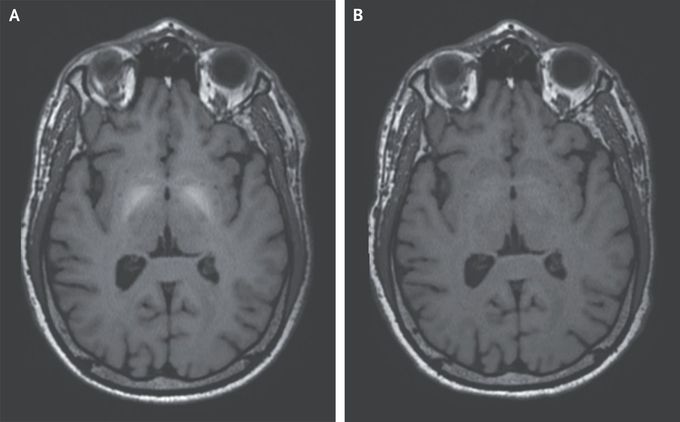


Manganese Accumulation in the Brain
A 55-year-old man presented to the neurology clinic with a 10-year history of progressive handwriting impairment and rapid, slurred speech. In his thirties, he had worked as a welder without access to personal protective equipment. Neurologic examination was notable for reduced facial expression, blepharospasm, and cluttered, dysarthric speech. The patient’s handwriting was disorganized and micrographic. Postural reflexes were mildly impaired. The patient’s occupational exposure, parkinsonism, and blepharospasm aroused concern for toxic effects from exposure to heavy metals. Subsequent magnetic resonance imaging (MRI) of the head showed a nonenhancing, T1-weighted, hyperintense signal in the basal ganglia on both sides (Panel A). Results of laboratory tests, including a serum iron panel and measurements of ceruloplasmin and urinary copper excretion, were normal. On the basis of the patient’s welding history and neurologic syndrome, a diagnosis of manganese poisoning was made. Serum and urine manganese levels were not obtained, since these values are often normal in cases of chronic or previous exposure. Whole-exome sequencing did not identify an inherited error in manganese metabolism. Treatment with intravenous EDTA was administered for 6 months, and the patient’s symptoms subsequently abated and the abnormal findings on MRI resolved (Panel B).


